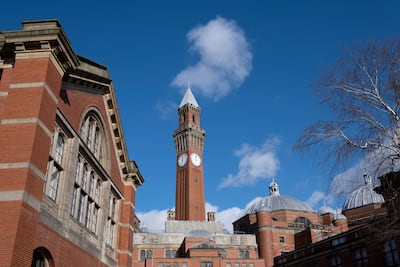Migration and climate change thousands of years ago left a lasting trace in the DNA of people from the Middle East, a study has shown.
The findings, published on Thursday in Cell, offer a fascinating insight into how humans spread across the Middle East after they arrived in the region from Africa about 50,000 years ago.
Researchers from the University of Birmingham and the UK's Wellcome Sanger Institute looked at 137 whole genomes from eight Middle Eastern populations, studying how they adapted to changing climates, lifestyles and migration.
The results also provide insight into how certain illnesses, such as diabetes, have become prevalent in the Gulf region.
"Our study explains how past events associated with lifestyle transitions, climate change and population movements that occurred thousands of years ago all left traces on the DNA of Middle Eastern populations", said Mohamed Al Marri, an Emirati researcher at the Wellcome Sanger Institute.
Using a new technology called linked-read sequencing, the authors identified 4.8 million new gene variants specific to people from the Middle East.
Some of these variants showed evidence of genetic selection as groups adapted to the changing environment and lifestyle within the wider region.
"When environments change, some mutations present on the DNA become beneficial and help the individuals and their populations to survive the changes", Dr Marc Haber of the University of Birmingham told The National.
"Consequently, those mutations will increase in frequency in a population because they provide their carriers with an advantage over people who do not carry the mutation.
"In our study, we found that certain mutations increased in frequency very rapidly in the past 6,000 years, reaching almost 50 per cent in Arabian populations, and are almost absent outside the region."
For example, lactase persistence, which allows the digestion of milk in adulthood, is common in Arabia and appears to overlap with the transition from a hunter-gatherer lifestyle into a herder-gatherer lifestyle.
Some of their other findings have a medical significance, shown in the frequency of variants associated with Type 2 diabetes in some populations in the past 2,000 years.

"We also find in Emiratis, who suffer from the one of the highest rates of Type 2 diabetes in the world, mutations implicated in Type 2 diabetes that have increased in frequency during the past 2,000 years", Dr Haber said.
"This suggests that these mutations might have been beneficial in the past but are today associated with diseases".
Researchers said some of their findings correspond with discoveries in archaeology and linguistics, including about the invention of agriculture and the spread of languages.
A significant population decrease was noticeable in Arabia about 6,000 years ago as it turned from a green, wet region into the largest sand desert in the world today.
But in the Levant, where agriculture first developed, there was a population boom around the time of the transition to farming.
In addition, they also discovered that movement of populations during the Bronze Age potentially spread the Semitic languages from the Levant to Arabia and East Africa.
Genetic sequencing also shows that Middle East populations typically have significantly lower Neanderthal DNA than northern Europeans.
The authors of the study said they believe that the Middle East is underrepresented in genomic research, and their study was partly undertaken to close this gap.
“The Middle East is an important region to understand human history, migrations, and evolution: it is where modern humans first expanded out of Africa, where hunter-gatherers first settled and transitioned into farmers, where the first writing systems developed, and where the first major known civilisations emerged,” they say in the report.
"However, despite this importance, the region has been historically understudied in genomic studies.
"To address this gap in genetic studies, we generated the most comprehensive resource of human genetic variation in the Middle East."
The researchers say they will now follow up on variants that show evidence of selection which they hope can expand on the region's genetic history.



